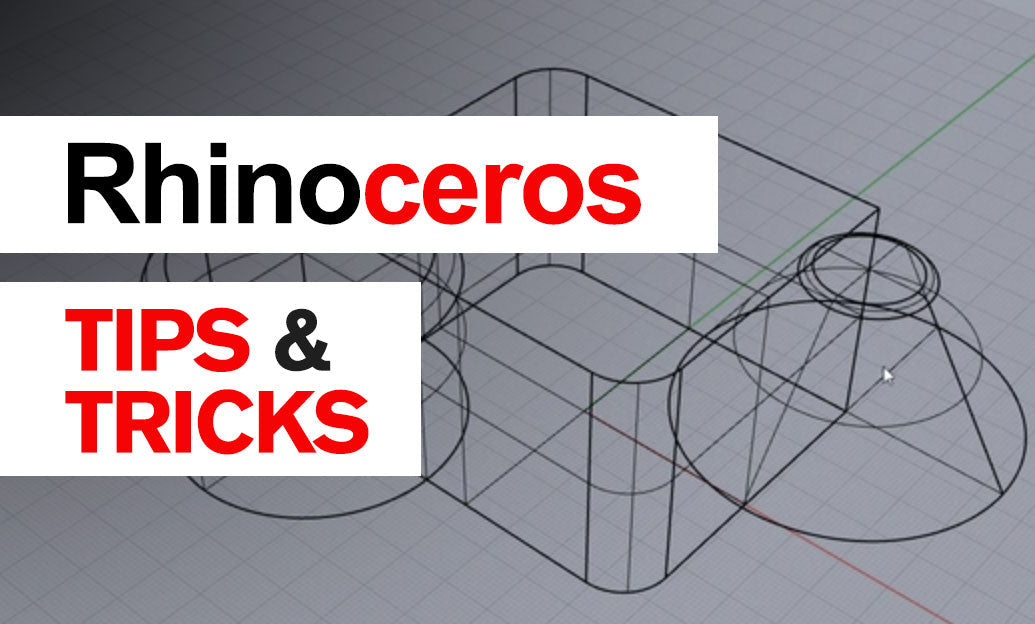Your Cart is Empty
Customer Testimonials
-
"Great customer service. The folks at Novedge were super helpful in navigating a somewhat complicated order including software upgrades and serial numbers in various stages of inactivity. They were friendly and helpful throughout the process.."
Ruben Ruckmark
"Quick & very helpful. We have been using Novedge for years and are very happy with their quick service when we need to make a purchase and excellent support resolving any issues."
Will Woodson
"Scott is the best. He reminds me about subscriptions dates, guides me in the correct direction for updates. He always responds promptly to me. He is literally the reason I continue to work with Novedge and will do so in the future."
Edward Mchugh
"Calvin Lok is “the man”. After my purchase of Sketchup 2021, he called me and provided step-by-step instructions to ease me through difficulties I was having with the setup of my new software."
Mike Borzage
Rhino 3D Tip: Techniques for Achieving Smooth Surface Modeling in Rhino 3D
February 26, 2025 2 min read

Creating smooth surfaces in Rhino 3D is crucial for achieving professional-grade models, especially in industries like automotive design, product development, and architecture. Here are some expert tips to help you craft seamless and smooth surfaces:
Use NURBS Modeling Effectively
Rhino 3D utilizes NURBS (Non-Uniform Rational B-Splines) for modeling. Mastering NURBS is key to creating smooth and precise surfaces.
- Ensure that your curves are clean and simple.
- Maintain minimal control points to keep surfaces smooth.
- Avoid unnecessary complexity in your geometry.
Utilize the Rebuild Command
The Rebuild command allows you to adjust the number of control points and the degree of a curve or surface.
- Use it to simplify complex curves and surfaces.
- Adjust control points to smooth out irregularities.
Employ Surface Matching Tools
Ensuring continuity between surfaces is essential for smooth transitions.
- Use the Match command to align surfaces seamlessly.
- Maintain positional (G0), tangential (G1), or curvature (G2) continuity as needed.
Leverage the Blend Surface Tool
The Blend Surface tool helps create a smooth transition between two surfaces.
- Adjust blend parameters for optimal smoothness.
- Use it to fill gaps and create organic shapes.
Analyze Surfaces with Zebra and Environment Map
Surface analysis tools are vital for detecting imperfections.
- Zebra Analysis: Visualize surface continuity and smoothness.
- Environment Map: Reflect a simulated environment to spot irregularities.
Simplify Control Point Structure
Less is often more when it comes to control points.
- Reduce control points to simplify surfaces.
- Avoid overlapping or tightly clustered points.
Maintain Consistent Surface Direction
Consistency in surface normals and UV directions ensures better surface quality.
- Use the Analyze Direction tool to verify surface normals.
- Align directions for adjacent surfaces.
Practice Good Modeling Habits
- Plan your modeling approach before starting.
- Build complex shapes from simple, clean components.
- Regularly check your work with analysis tools.
By implementing these techniques, you can significantly improve the smoothness and quality of your surfaces in Rhino 3D. For more professional tips and resources, visit NOVEDGE, your one-stop shop for all things related to Rhino 3D software.
You can find all the Rhino products on the NOVEDGE web site at this page.
Also in Design News

Harnessing Distributed Ledger Technology for Secure and Transparent Design Collaboration
May 06, 2025 11 min read
Read MoreSubscribe
Sign up to get the latest on sales, new releases and more …




